|
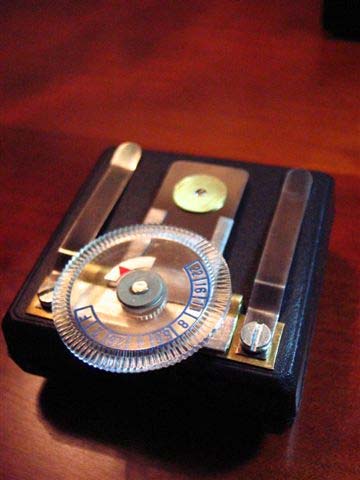
BUILDING A HIGH POWER POCKET SIMPLE MICROSCOPE
By: Alvaro Amaro de Azevedo (Brazil) – 10 November 2006
Converted to html format Jan. 2015 (mol smith)
|
|
Preliminary Introduction by mol smith
This article was originally published a good few years ago (as a PDF file). I believe it to be an interesting article to encourage people rising to this hobby to consider they do not need to rely solely on purchased expensive technology. Self-reliance, curiosity, and well... just being
someone who doesn't run with the crowd - these can make a person an innovator. We need people just like that. We need new generations who just don't go with the status quo, who, instead surpass their previous generations with their new minds and ingenuity. Life is about work, play, and self-exploration for
everyone. What we do differently... these are often the things which define us!
1. Introduction
The idea of building a portable high power simple microscope accompanies most of my projects especially because the whole construction setup can easily be made in small sizes and be stored in small boxes. However, the construction of a pocket microscope is rather more challenging hence, it has to be small enough to slip inside a pocket, containing all what takes to en-sure a good performance including a suitable illumination system. The main constrain
for me, however wasn’t any of these requirements but just one simple and practical aspect, the maintenance of the lens system protected against dirties and particles one generally carries within the pocket. If the lens collects dust, fibers or dirties, the performance of the objective will be se-verely compromised. This project represents a solution for this problem and is totally based in easy to find materials.
|
|
2. Designing the Microscope
The concept here is to build the microscope in a small box that can stay closed by a snap action and can easily be open when required. The illumination setup would consist of a 3 V Lithium battery connected to a white LED and a switch. The beam of white light is collimated by a condenser lens and directed to the sample through an oblique mirror. The choice was made to use a jewelry case 5 x 5 cm as the main body of the scope. Inside the case it was
placed a metal chassis which the whole illumination system was assembled in. This chassis is screwed in the box and can easily be taken out by unscrewing it as shown in the picture (right.).
|
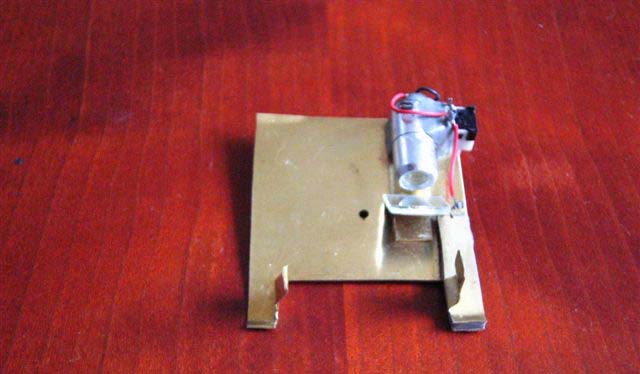
Illumination system in the chassis
|
|
Outside the box, over the lid, it was assembled the clips and the focusing mechanism to drive the lens plate, as depicted below.
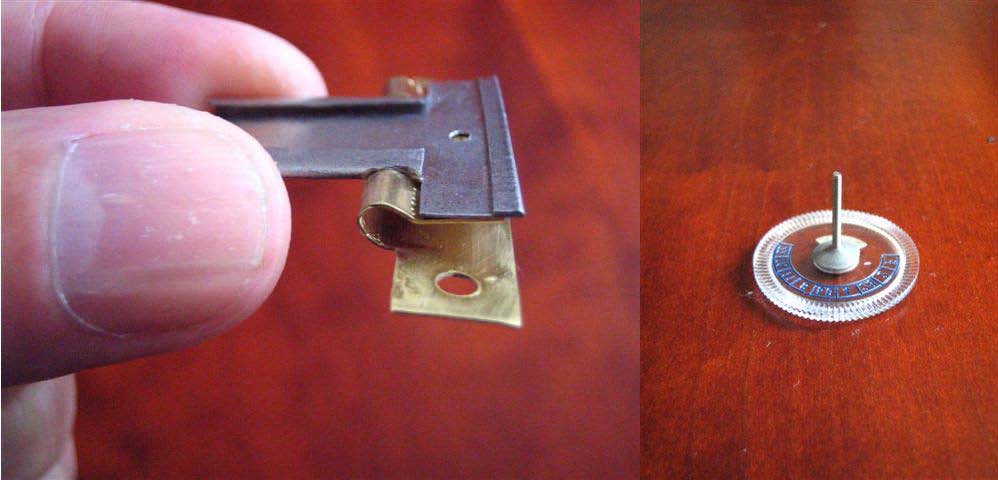
Lens frame driver Focusing wheel
|
The novelty of this model is that the lens plate is removable and can be stored inside the box while not in use what makes the transport inside the pocket perfectly possible without the risk of soiling the lenses. Inside the box, there is a small neodymium magnet to which the plate stays firmly adhered until its use is required for observation.
|
|
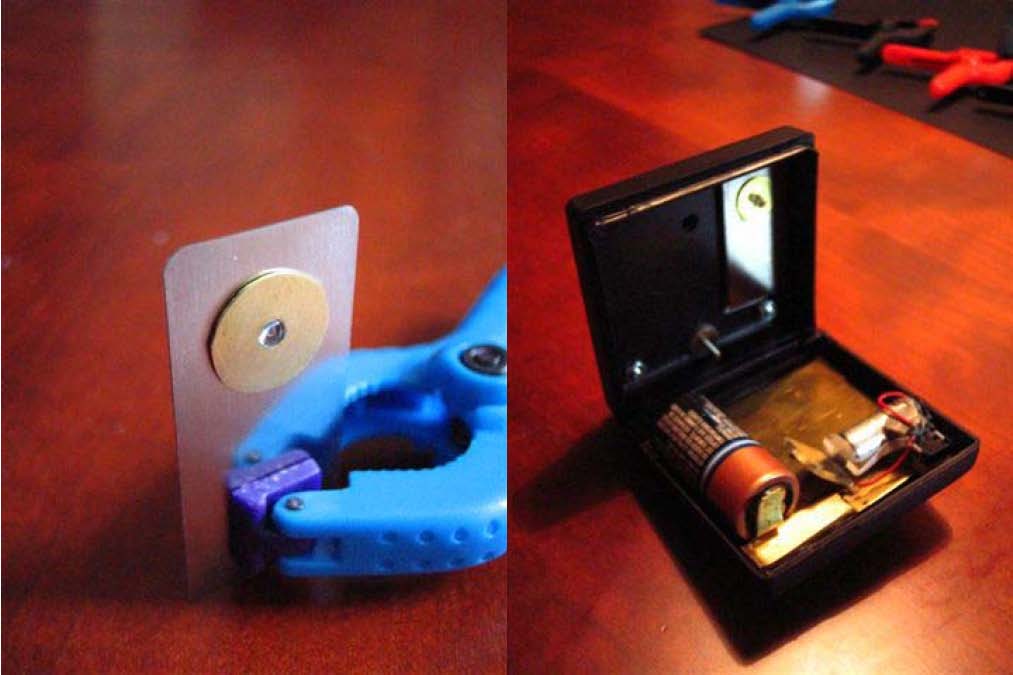
Lens in the holding plate. View of the inside
|
|
|
The lens system consists of a doublet lens having a 2.5 mm diameter upside down Stan-hope like plano-convex lens and a 1.0 mm diameter plano-convex lens as object lens. The doublet is mounted in a 15 x 25 mm steel plate.
|
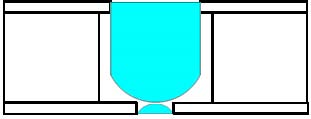
Doublet sketch
|
An important note that should be added to this subject is the fact that the design of the doublet lens has been modified regarding to my earlier models. The resolution of this doublet appears to be superior to the previous lenses as the polishing technique has been perfected and allows one to obtain lenses with higher transparency and clarity.
|
|
The sketch below represents different views and parts of the pocket microscope.
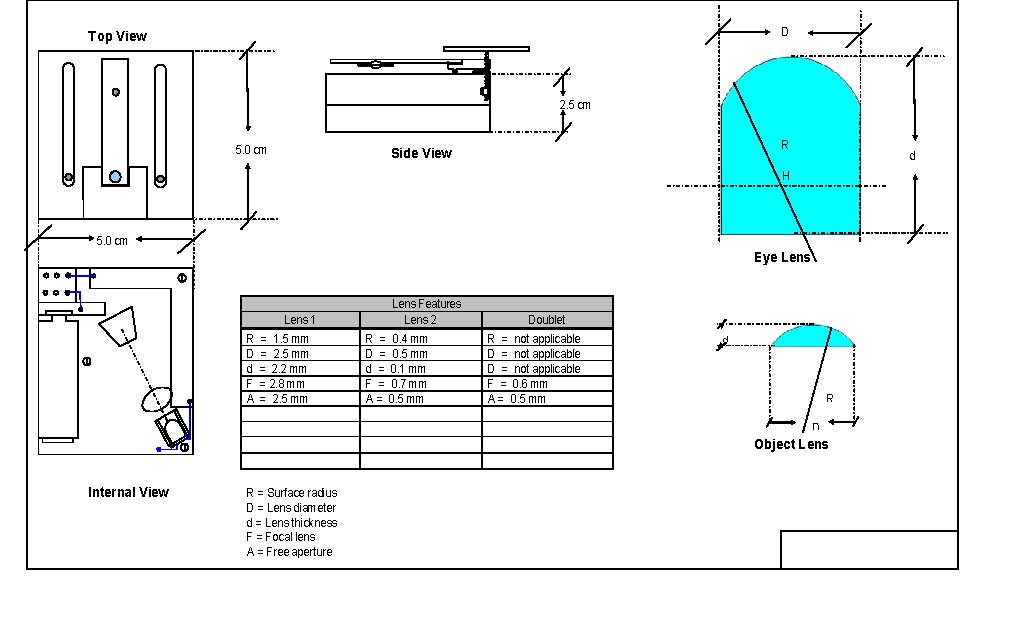
|
|
The values indicated in the table above are based on estimations and do not represent any accurately taken measurements as the author lacks more sophisticated hardware to perform them. Yet, some figures seem to be consistent with experimental observations. The magnification power of the objective was estimated by comparing the images observed with this doublet and those from a regular compound microscope appearing
to be above 300 X. |
|
3. Gallery of Images
The pictures being displayed below were captured using the objective lens described in this article and the setup from my previous paper published by Micscape Magazine on July 2006 – “Improving the Performance of the Single Lens Microscope”
|
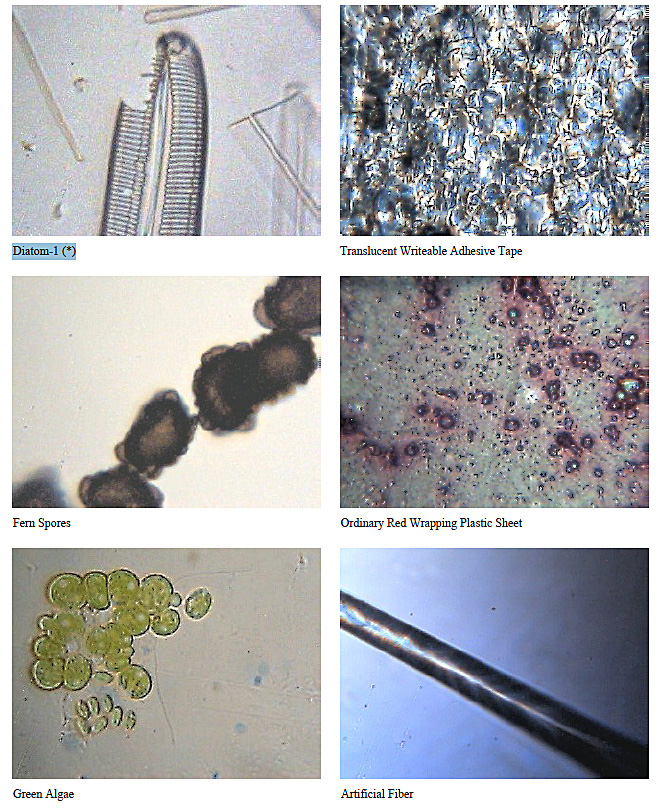
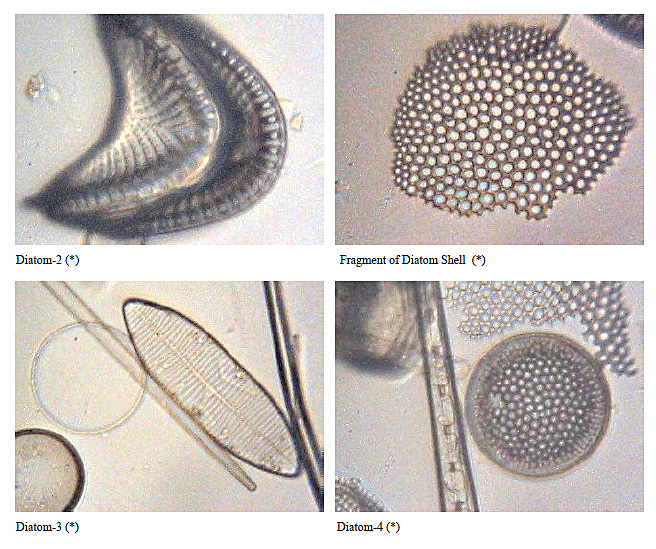
|
|
|
4. Final Comments
After this microscope was completed, other doublets fitting to the plate holder were made. They allow to achieve different magnifications and the lowest power one is about 150 X. This feature is very convenient to give the observer a previous overview of the specimen to be observed al-though an even lower magnification should do better. The author intends to add a variable resistor to the illumination circuitry in order to achieve lighting control. This will allow
to switch from low power to high power keeping the same light intensity without using a more elaborated diaphragm setup.
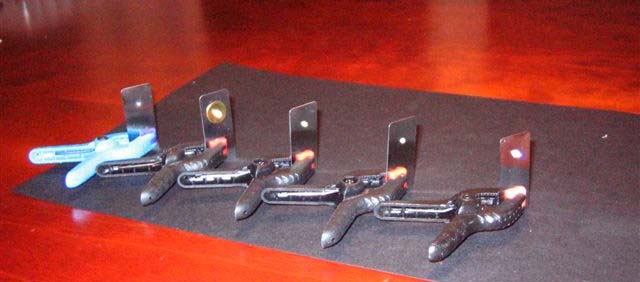
Spare lenses for different magnification powers
5. Acknowledgements
To David Walker who besides the opportunity he gives to display my work in Micscape Maga-zine, can always find time for helping and sharing his insights.
To Frithjof Sterrenburg who was kind enough to supply me five diatom mounted slides which all the diatom images displayed in this article (indicated with - * ) came from.
Comments to the author Alvaro A. de Azevedo
are welcomed.
|
|
|
|
Microscopy UK Front
Page
Micscape
Magazine
Article
Library
© Microscopy UK or their
contributors.
Re-Published
in the Jan 2015 edition of Micscape
Magazine.
Please report any Web problems or offer general comments
to the
Micscape
Editor
.
Micscape is the on-line monthly magazine of the Microscopy
UK website at
Microscopy-UK
.
©
Onview.net Ltd, Microscopy-UK, and all contributors 1995
onwards. All rights reserved.
Main site is at
www.microscopy-uk.org.uk .
|
|
|








